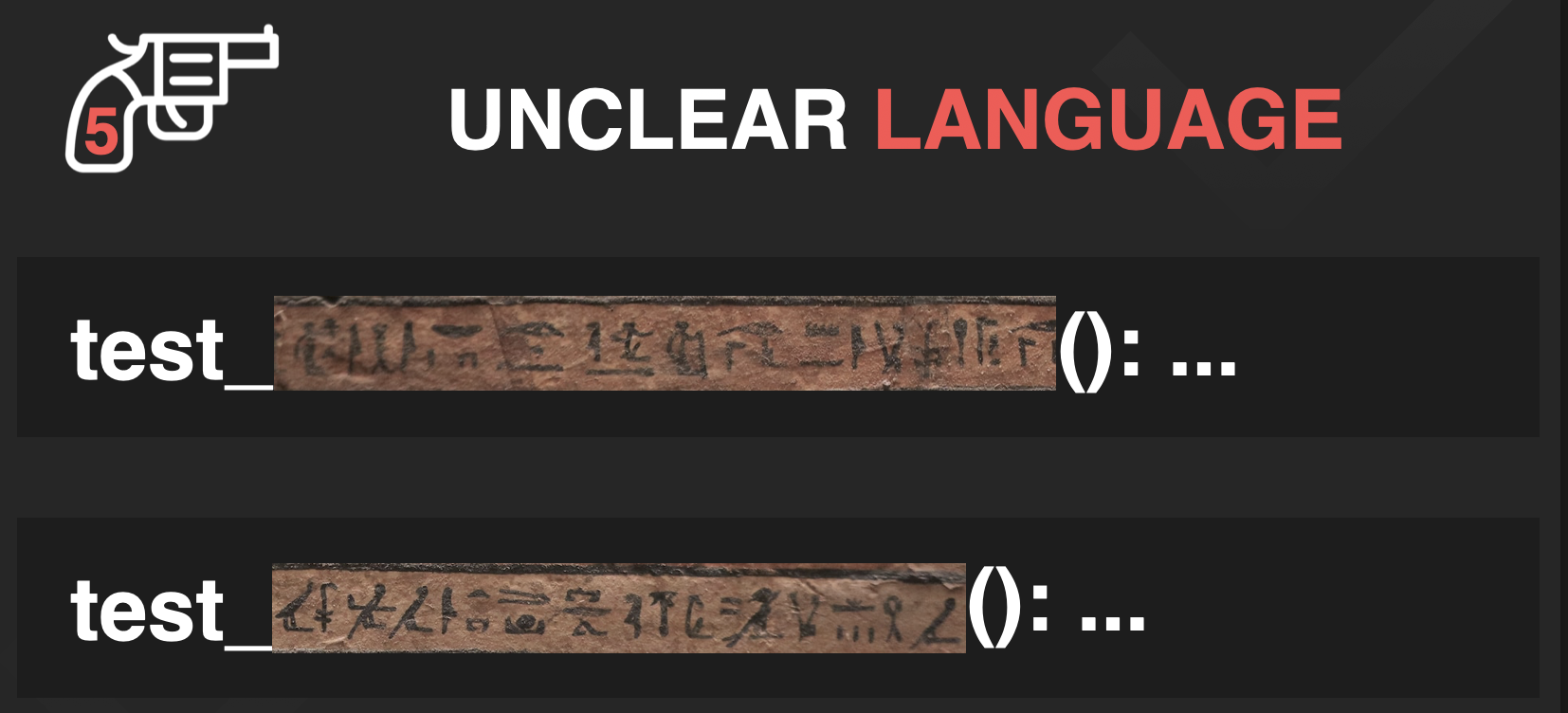Here it is in PyCon US 2023
Another problem that makes it more difficult to understand tests is unclear language.
Two guidelines that help me deal with this:
- We want to use decisive language
- We want the language to be specific and explicit
Suppose we have a book store and we’re testing the functionality for editing a book.
Let’s see some examples of test phrasing:
This is simply too general.
There are so many things that might be tested, and this means almost nothing about what will get tested in practice.
Adding things like “it works” or “it’s correct” - most of the time, this is just bloat.
It only makes the name bigger, but doesn’t give us any extra information.
That’s much better - it’s a lot more specific.
The only problem here is the indecisive language.
Why “should”?
Will this ever NOT be correct?
It’s both bloated and confusing.
So this as well - not optimal.
That’s much better in my opinion.
It’s decisive, explicit and specific.
I suggest to aim towards this whenever possible.
Conclusion
When phrasing test names and descriptions, try to aim for decisive, specific and explicit language.
